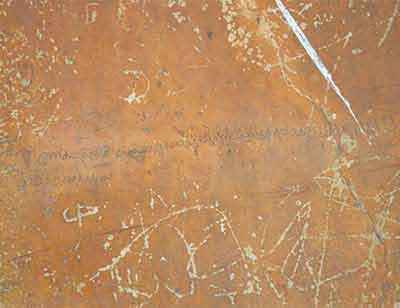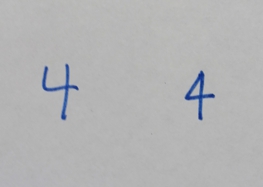|
Jobless Douglas
''Jobless Douglas'' () a 2024 Sri Lankan Sinhala comedy film directed by Senaka Navaratne and produced by Chandra Kumari Navaratne. It stars Rodney Warnakula in the titular role along with Mahinda Pathirage, Dilshani Perera, Nandana Hettiarachi and Don Guy in supportive roles. Popular television comedian Shiran Shantha also made his debut cinema acting with the film. Plot Cast * Rodney Warnakula as Douglas aka Kotahene Duggy * Mahinda Pathirage Thanthrige Pathirage Mahinda (born March 22, 1952, as මහින්ද පතිරගේ) inhala, popularly as Mahinda Pathirage, is an actor in Sri Lankan cinema, stage drama and television. Acting particularly in comedy roles, Pathirage ... as Kochchi Kade Champa * Dilshani Perera as Veronica * Nandana Hettiarachi as Ran Banda * Don Guy as Wadakapushpa * Jeevan Handunnetti * Asanga Perera * Anura Srinath * Shiran Shantha as Vasudeva * Helen Reynolds * Lakmini Karunarachchi * Thushara Jayasuriya * Tharaka Adhikari * Nuwandik ... [...More Info...] [...Related Items...] OR: [Wikipedia] [Google] [Baidu] |
Rodney Warnakula
Warnakula Patabandige Rodney Priyantha Perera, (born 24 April 1961 as රොඩ්නි වර්ණකුල) inhala, popularly known as Rodney Warnakula, is a Sri Lankan actor, comedian, singer, and dubbing artist. Family Warnakula was born on 24 April 1961 in Ja-Ela, as the son of Aloy Warnakula, an actor, and Annie Jayakodi, a housewife. He made his stage debut in Lucien Bulathsinhala’s 1981 drama ''Tharavo Igilethi''. He is married to Erani Warnakula. They have two daughters and a son. His elder daughter Harshani Prasangika is a dancing teacher, his second daughter is Samadhi Upekshika and his youngest is his son, Eron Lakdeepa. Career In 1980, The Tower Foundation conducted a drama course with lecturers from Shanti Niketan, India,including Warnakula. Later one of the lecturers in the course, Anula Bulathsinhala invited him to participate for the stage play ''Tharavo Igilethi''. Warnakula has performed in over fifty stage plays, fifteen teleplays and twenty films, ... [...More Info...] [...Related Items...] OR: [Wikipedia] [Google] [Baidu] |
Mahinda Pathirage
Thanthrige Pathirage Mahinda (born March 22, 1952, as මහින්ද පතිරගේ) inhala, popularly as Mahinda Pathirage, is an actor in Sri Lankan cinema, stage drama and television. Acting particularly in comedy roles, Pathirage is best known for the role ''Purohitha'' in television sitcom ''Raja Sabhawa''. Personal life Mahinda was born on 22 March 1952 in Anuradhapura. His father was Thanthiri Pathirage Hendrick Appuhami. He has 10 siblings in the family. He completed education until grade 10 from Walisinghe Harischandra Maha Vidyalaya. Before entering to drama, he continued his father's business as photo framer and painter. Mahinda is married to Kumudini Gunawardhana and the couple has one daughter, Nipuni Sharada and one son, Nandun Nisanka. Career In 1976, he along with many artists in Anuradhapura formed a drama group called ''Jana Nalu Kela''. He first played in the play ''Aruma Naruma'' produced by Anuradha Ranjith. He won a merit award for his role in ... [...More Info...] [...Related Items...] OR: [Wikipedia] [Google] [Baidu] |
Sri Lanka
Sri Lanka, officially the Democratic Socialist Republic of Sri Lanka, also known historically as Ceylon, is an island country in South Asia. It lies in the Indian Ocean, southwest of the Bay of Bengal, separated from the Indian subcontinent, Indian peninsula by the Gulf of Mannar and the Palk Strait. It shares a maritime border with the Maldives in the southwest and India in the northwest. Sri Jayawardenepura Kotte is the legislative capital of Sri Lanka, while the largest city, Colombo, is the administrative and judicial capital which is the nation's political, financial and cultural centre. Kandy is the second-largest urban area and also the capital of the last native kingdom of Sri Lanka. The most spoken language Sinhala language, Sinhala, is spoken by the majority of the population (approximately 17 million). Tamil language, Tamil is also spoken by approximately five million people, making it the second most-spoken language in Sri Lanka. Sri Lanka has a population of appr ... [...More Info...] [...Related Items...] OR: [Wikipedia] [Google] [Baidu] |
Sinhalese Language
Sinhala ( ; Sinhala: , , ), sometimes called Sinhalese ( ), is an Indo-Aryan language primarily spoken by the Sinhalese people of Sri Lanka, who make up the largest ethnic group on the island, numbering about 16 million. It is also the first language of about 2 million other Sri Lankans, as of 2001. It is written in the Sinhalese script, a Brahmic script closely related to the Grantha script of South India. The language has two main varieties, written and spoken, and is a notable example of the linguistic phenomenon known as diglossia. Sinhala is one of the official and national languages of Sri Lanka. Along with Pali, it played a major role in the development of Theravada Buddhist literature. Early forms of the Sinhalese language are attested to as early as the 3rd century BCE. The language of these inscriptions, still retaining long vowels and aspirated consonants, is a Prakrit similar to Magadhi, a regional associate of the Middle-Indian Prakrits that had been spo ... [...More Info...] [...Related Items...] OR: [Wikipedia] [Google] [Baidu] |
2020s Sinhala-language Films
S, or s, is the nineteenth letter of the Latin alphabet, used in the English alphabet, the alphabets of other western European languages and other latin alphabets worldwide. Its name in English is ''ess'' (pronounced ), plural ''esses''. History Northwest Semitic šîn represented a voiceless postalveolar fricative (as in 'ip'). It originated most likely as a pictogram of a tooth () and represented the phoneme via the acrophonic principle. Ancient Greek did not have a "sh" phoneme, so the derived Greek letter Sigma () came to represent the voiceless alveolar sibilant . While the letter shape Σ continues Phoenician ''šîn'', its name ''sigma'' is taken from the letter ''Samekh'', while the shape and position of ''samekh'' but name of ''šîn'' is continued in the '' xi''. Within Greek, the name of ''sigma'' was influenced by its association with the Greek word (earlier ), "to hiss". The original name of the letter "Sigma" may have been ''san'', but due to the ea ... [...More Info...] [...Related Items...] OR: [Wikipedia] [Google] [Baidu] |
2024 Films
4 (four) is a number, numeral and digit. It is the natural number following 3 and preceding 5. It is a square number, the smallest semiprime and composite number, and is considered unlucky in many East Asian cultures. Evolution of the Hindu-Arabic digit Brahmic numerals represented 1, 2, and 3 with as many lines. 4 was simplified by joining its four lines into a cross that looks like the modern plus sign. The Shunga would add a horizontal line on top of the digit, and the Kshatrapa and Pallava evolved the digit to a point where the speed of writing was a secondary concern. The Arabs' 4 still had the early concept of the cross, but for the sake of efficiency, was made in one stroke by connecting the "western" end to the "northern" end; the "eastern" end was finished off with a curve. The Europeans dropped the finishing curve and gradually made the digit less cursive, ending up with a digit very close to the original Brahmin cross. While the shape of the character ... [...More Info...] [...Related Items...] OR: [Wikipedia] [Google] [Baidu] |
2024 Comedy Films
4 (four) is a number, numeral and digit. It is the natural number following 3 and preceding 5. It is a square number, the smallest semiprime and composite number, and is considered unlucky in many East Asian cultures. Evolution of the Hindu-Arabic digit Brahmic numerals represented 1, 2, and 3 with as many lines. 4 was simplified by joining its four lines into a cross that looks like the modern plus sign. The Shunga would add a horizontal line on top of the digit, and the Kshatrapa and Pallava evolved the digit to a point where the speed of writing was a secondary concern. The Arabs' 4 still had the early concept of the cross, but for the sake of efficiency, was made in one stroke by connecting the "western" end to the "northern" end; the "eastern" end was finished off with a curve. The Europeans dropped the finishing curve and gradually made the digit less cursive, ending up with a digit very close to the original Brahmin cross. While the shape of the character fo ... [...More Info...] [...Related Items...] OR: [Wikipedia] [Google] [Baidu] |



